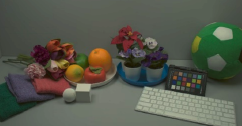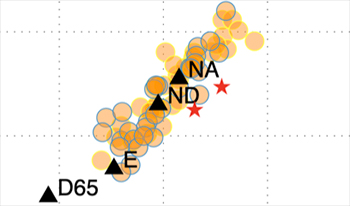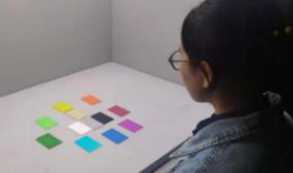
The development of various new imaging systems introduces new viewing conditions that did not exist in the past. Mixed reality systems, which capture the real environment and renders the captured image on display with virtual objects superimposed, require more immersive and realistic feeling than virtual and augmented reality systems, especially when users just put on the headsets. Therefore, the rendering shown on the display needs to be carefully adjusted to match the appearance in the real environment. In this study, we specifically focus on reproducing the overall color tone of the real environment under different ambient illumination color by shifting the white point of the display. The human observers viewed a real environment under different ambient illumination conditions, in terms of CCT and chromaticities, and evaluated the rendering of the captured scene with 44 white points. The results clearly suggested that the display white point should be adaptive to the ambient illumination color, especially when the ambient illumination had a CCT below 4000 K, to provide a good user experience.

In colorimetry and color appearance modeling it is assumed that chromatic adaptation is reversible. Recent experimental results suggest that this might not be the case and that bidirectional models of chromatic adaptation might be needed. This paper describes a series of experiments designed to collect very-high precision corresponding colors data for sensory chromatic adaptation to test the hypothesis that chromatic adaptation is reversible for individual observers. The results indicate that there are small, but statistically significant, differences in corresponding colors due to changes in the previous state of adaptation. However the effect sizes are small and the number of repeated observations required to detect these differences is very large. Thus it is concluded that these differences are, while interesting, not problematic for practical colorimetry. In addition the application of the vk20 chromatic adaptation model for predicting such effects is further explored and its 15000K reference adaptation state is validated.

The goal of this study was to investigate the chromatic adaptation under extreme chromatic lighting conditions using the magnitude estimation method. The locations of the lightings on CIE1976 u′v′ plane were close to the spectrum locus, so the colour purity was far beyond the previous studies, and the data could test the limitations of the existing models. Two psychophysical experiments were carried out, and 1,470 estimations of corresponding colours were accumulated. The results showed that CAT16 gave a good prediction performance for all the chromatic lightings except for blue lighting, and the degree of adaptation was relatively high, that is, D was close to 1. The prediction for blue lightings was modified, the results showed the performance of CAM16 could be improved by correcting the matrix instead of the D values.